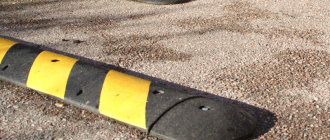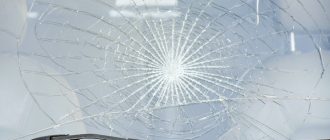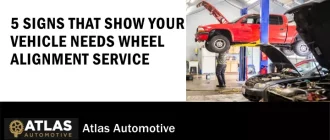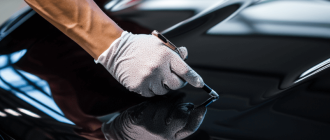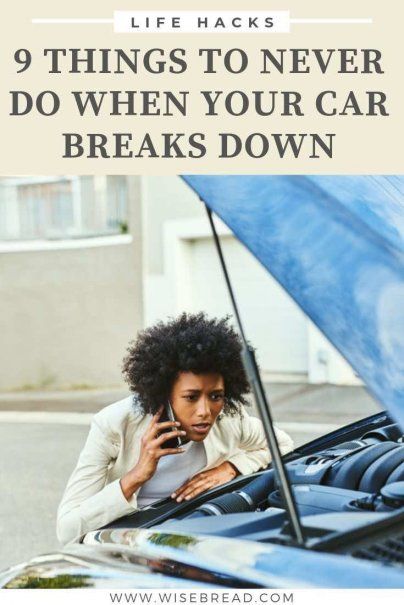
3 Simple Things You Should Do If Your Car Breaks Down
Breaking down in your car can be a stressful situation, but it’s important to stay calm and take the necessary steps to ensure your safety. Whether you’re on a busy highway or a quiet side street, knowing what to do if your car breaks down can make all the difference.
Here are three simple things you should do if your car breaks down:
1. Move your car out of traffic and onto the shoulder.
If your car breaks down in the middle of traffic, it’s crucial to move it out of harm’s way as quickly and safely as possible. Put your hazard lights on and try to steer towards the nearest shoulder or emergency lane. This will help reduce the risk of accidents and keep you safe while you wait for help.
2. Call for roadside assistance or emergency services.
Once you have safely moved your car, it’s time to call for help. Contact your roadside assistance provider or dial emergency services for immediate assistance. Provide them with your location and a clear description of the problem so they can dispatch the appropriate help.
3. Stay in your car and wait for help.
While waiting for help to arrive, it’s best to stay in your car with the doors locked. This will provide you with a safe and secure environment until professional assistance arrives. Avoid accepting help from strangers and keep your belongings secure.
Remember, keeping calm and following these simple steps can help ensure your safety if your car breaks down. By taking immediate action and seeking help, you’ll be back on the road in no time.
Stay Calm and Assess the Situation
When your car breaks down, it can be a stressful and inconvenient situation. However, it’s important to stay calm and assess the situation to ensure your safety and the safety of others on the road. Here are three simple things you should do if your car breaks down:
- Find a safe spot: If possible, try to pull over to the side of the road or into a nearby parking lot. This will help prevent any accidents and ensure your safety. Turn on your hazard lights to make your vehicle more visible to other drivers.
- Call for help: Once you have safely stopped your car, call for assistance. This could be your roadside assistance provider, a friend or family member, or a towing service. Provide them with your location and a description of the problem so they can help you effectively.
- Stay inside the vehicle: Unless you’re in immediate danger, it’s best to stay inside your car while waiting for help to arrive. Lock your doors and roll up your windows to ensure your safety. If you need to communicate with others, use your phone or a roadside assistance sign to get their attention.
Remember, staying calm and assessing the situation can help you handle a car breakdown more effectively. By following these simple steps, you can ensure your safety and get the help you need.
Move to a Safe Location
If your car breaks down, one of the first things you should do is move it to a safe location. This is crucial for your own safety as well as the safety of other drivers on the road.
When your car breaks down, it can be a stressful and unexpected situation. However, it’s important to stay calm and take the necessary steps to ensure your safety. Here are three simple things you should do if your car breaks down:
- Stay calm: Panicking will only make the situation worse. Take a deep breath and try to remain calm. This will help you think clearly and make better decisions.
- Turn on your hazard lights: As soon as you realize your car has broken down, turn on your hazard lights. This will alert other drivers to the fact that your car is not functioning properly and that they should proceed with caution.
- Move your car to a safe location: If possible, try to steer your car to the side of the road or to a nearby parking lot. This will help prevent accidents and keep the flow of traffic moving smoothly. If you’re unable to move your car, make sure to stay inside with your seatbelt on and call for assistance.
Remember, safety should always be your top priority when your car breaks down. By staying calm, turning on your hazard lights, and moving your car to a safe location, you can help prevent further accidents and ensure your own well-being.
Turn on Hazard Lights
If your car breaks down, one of the first things you should do is turn on your hazard lights. This simple action can alert other drivers to your situation and help prevent accidents. Hazard lights are designed to be highly visible and easily recognizable, making them an effective way to signal that there is a problem with your vehicle.
By turning on your hazard lights, you are indicating to other drivers that they need to be cautious and give you space. This can be especially important if your car has broken down in a busy area or on a high-speed road. The flashing lights can draw attention to your vehicle and serve as a warning that there may be obstacles or hazards ahead.
It’s important to remember that hazard lights should only be used when your car is stationary and not in motion. Once you have safely pulled over to the side of the road, activate your hazard lights to let others know that your vehicle isn’t moving. This will help prevent confusion and potential accidents.
Turning on your hazard lights is a simple yet crucial step to take if your car breaks down. It can ensure your safety and the safety of others on the road. Remember to turn off your hazard lights once you have resolved the issue with your vehicle or if you are able to move it to a safer location.
Call for Assistance
If your car breaks down, one of the first things you should do is call for assistance. Depending on your situation, there are a few different options for who to call:
- Roadside Assistance: If you have a roadside assistance service, such as AAA, you should call them for help. They can provide services such as towing, lockout assistance, jump starts, and more.
- Local Mechanic: If you have a trusted local mechanic, you can call them to see if they can come and help you. They may be able to diagnose and fix the issue on the spot, or they may recommend a tow to their shop.
- Family or Friends: If you don’t have roadside assistance or a local mechanic to call, you can try reaching out to family or friends who may be able to help. They could potentially give you a ride, bring you gas, or assist with other car-related issues.
When calling for assistance, be sure to provide your location and a description of the issue you’re experiencing. This will help the person or service you’re calling understand the situation and determine the best course of action.
Communicate Your Location
If your car breaks down, one of the first things you should do is communicate your location. This is important for several reasons:
- Emergency services: If you are in immediate danger or need urgent assistance, knowing your location can help emergency services reach you quickly. In an emergency situation, time is critical.
- Getting help: Communicating your location to friends, family, or a roadside assistance service can help them locate you and provide the necessary help. Whether it’s someone coming to pick you up or a tow truck arriving at the scene, knowing where you are is essential.
- Visibility: If you are stranded on a busy road or in an unfamiliar area, letting others know your location can increase your visibility. This can help prevent accidents and ensure that other drivers are aware of your presence on the road.
There are several ways to communicate your location:
- Call someone: Use your phone to call a friend, family member, or roadside assistance service. Provide them with details about your location, such as the street name, nearby landmarks, or any other identifying features.
- Use GPS coordinates: If you have access to a GPS device or a smartphone with GPS capabilities, you can provide your exact coordinates. This can be especially helpful in remote or rural areas where street names and landmarks may be less recognizable.
- Use roadside markers: If you are on a highway or major road, look for roadside markers or mile markers. These signs are typically spaced at regular intervals and can help emergency services locate you more easily.
Remember to stay calm while communicating your location. Providing clear and accurate information will help others find you quickly, ensuring that help arrives as soon as possible.
Stay Inside the Vehicle
If your car breaks down, one of the first things you should do is stay inside the vehicle. This may seem counterintuitive, but it is actually the safest option.
Remaining inside the car helps protect you from oncoming traffic and other potential dangers. If you exit your car and stand outside, you are putting yourself at risk of being hit by passing cars or getting involved in an accident.
Instead, keep your seatbelt on and put your hazard lights on to alert other drivers of your situation. If possible, try to move your car to a safe area, such as the side of the road or a parking lot, before waiting for help to arrive.
Waiting inside the vehicle also provides shelter and protection from weather conditions. If it’s raining or cold outside, staying inside the car will keep you dry and warm. This can be especially important if you are stranded in a remote area where help may take some time to arrive.
However, there are a few exceptions to staying inside the vehicle:
- If you are in immediate danger, such as if your car is on fire or in a dangerous location, it may be necessary to exit the vehicle.
- If you have a roadside emergency kit or other necessary supplies in your trunk, you may need to exit the car to access them.
- If you have passengers in the car, you should communicate and decide together what the best course of action is.
Overall, staying inside the vehicle when your car breaks down is usually the safest option. Take the time to assess the situation and make a decision based on your specific circumstances.
Use Emergency Signals
If your car breaks down, it’s important to alert other drivers on the road of your situation. One of the simplest things you can do is to use your car’s emergency signals. These signals are designed to grab the attention of other drivers and indicate that there is a problem with your vehicle. Here are a few steps to take when using emergency signals:
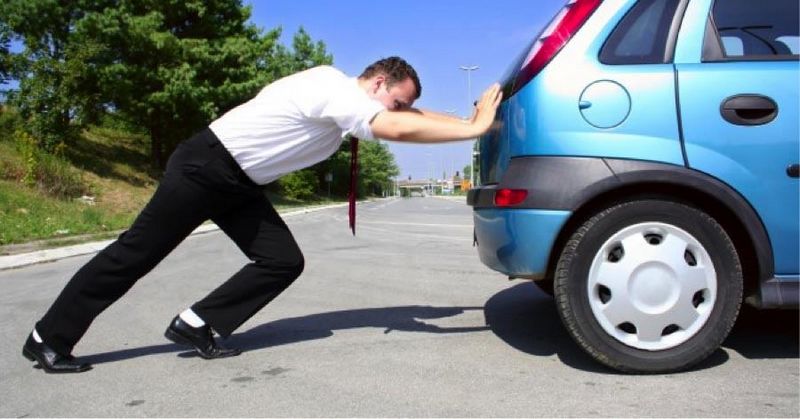
- Turn on your hazard lights: Locate the hazard light button in your car, usually represented by a triangle. Press this button to activate your hazard lights, which will make all of your car’s signal lights flash simultaneously. This will make your car more visible to other drivers, especially in low light or bad weather conditions.
- Use your emergency triangle: Place an emergency triangle behind your car, preferably around 100 meters away. The triangle should be placed on the side of the road to warn approaching traffic of your presence. Make sure to put on reflective clothing and exercise caution while doing this.
- Stay inside your car: While waiting for help to arrive, it is generally safer to remain inside your car with the doors locked. This will protect you from any potential hazards on the road and prevent strangers from approaching your vehicle. Only exit your car if it is absolutely necessary and if you can do so safely.
Remember to familiarize yourself with the location of your car’s hazard light button and keep an emergency triangle in your trunk at all times. Using these emergency signals can help ensure your safety and the safety of others while you wait for assistance.
Keep Essential Supplies
When your car breaks down, it is important to be prepared for any situation. One of the simple things you should do if your car breaks down is to keep essential supplies on hand. These supplies can help you stay safe and comfortable until help arrives.
Here are some essential supplies that you should keep in your car:
- Emergency roadside kit
- Flashlight with extra batteries
- Jumper cables
- Spare tire and jack
- Basic tool kit
- First aid kit
- Flares or reflective triangles
- Bottled water and non-perishable snacks
- Extra cell phone charger
- Blankets or warm clothing
Having these essential supplies in your car can make a big difference in an emergency. They can help you fix minor issues, signal for help, or simply stay safe and comfortable until help arrives. Remember to regularly check and replace any expired items in your emergency kit.
It is always better to be prepared for a car breakdown rather than being caught off guard. Keeping these essential supplies in your car can give you peace of mind and help you handle unexpected situations more effectively.
Stay Warm and Visible
If your car breaks down, there are simple things you should do to stay warm and visible while waiting for help to arrive.
- Find a safe spot: Pull over to the side of the road as far as possible to ensure you are not blocking traffic. Turn on your hazard lights to alert other drivers.
- Stay warm: If it’s cold outside, bundle up in warm clothing and use blankets or a sleeping bag from your car’s emergency kit to keep yourself warm.
- Make yourself visible: Place reflective triangles or flares behind your car to warn other drivers. If it’s dark, keep your interior lights on to make your car more visible.
- Call for help: Use your cell phone to call for roadside assistance or emergency services. Provide them with your location and a description of the problem.
Remember, staying warm and visible is crucial if your car breaks down. By following these simple steps, you can ensure your safety while waiting for help to come.
Lock the Doors
One simple thing that you should do if your car breaks down is to lock the doors. This might seem like common sense, but in the chaos of a breakdown, it’s easy to forget. By locking the doors, you can help ensure your safety and the security of your vehicle.
If you are unable to move your car to a safe location or if you are waiting for help to arrive, it’s important to lock the doors to protect yourself and your belongings. This can help to deter potential thieves and keep unwanted individuals from gaining access to your vehicle.
In addition to locking the doors, it’s also a good idea to roll up the windows if your car is equipped with power windows. By doing so, you can further prevent unauthorized access to your vehicle. If your car has manual windows, make sure they are closed completely.
It’s important to note that while locking your doors can provide an added layer of security, it should not be your only line of defense. If you find yourself in a dangerous situation, it’s best to contact the proper authorities or seek help from a nearby establishment.
Overall, locking the doors is a simple and effective step that you should take if your car breaks down. By doing so, you can help ensure your safety and the security of your vehicle.
Do Not Accept Rides from Strangers
When your car breaks down, it can be a stressful situation. However, there are certain things you should do to ensure your safety. One of the most important things to remember is to never accept rides from strangers.
If you find yourself stranded on the side of the road, it may be tempting to accept help from a friendly passerby. However, it is crucial to prioritize your safety and avoid getting into a car with someone you do not know.
Here are three reasons why you should not accept rides from strangers:
- Safety concerns: Accepting a ride from a stranger puts your safety at risk. You have no way of knowing their intentions or whether they can be trusted. It is always better to wait for professional help or contact a trusted friend or family member.
- Potential criminal activity: Unfortunately, there have been cases where individuals posing as good Samaritans have taken advantage of people in vulnerable situations. These individuals may have ulterior motives and could put you in harm’s way.
- Insurance complications: If you accept a ride from a stranger and something goes wrong, your insurance may not cover any damages or injuries that occur. Your insurance policy is designed to protect you in certain situations, and accepting a ride from a stranger may void that protection.
Instead of accepting a ride from a stranger, there are safer alternatives you can consider:
- Call for professional help: Contact a towing service or roadside assistance company to help you with your car trouble. These professionals are trained to handle these situations and can ensure your safety.
- Contact a trusted friend or family member: Reach out to someone you trust who can come and assist you. They can provide support, help you find a solution, and ensure your safety.
- Stay in your car: If it is safe to do so, it is often better to stay in your car until help arrives. Lock the doors, keep the windows rolled up, and wait for assistance from a trusted source.
Remember, when your car breaks down, it is important to prioritize your safety above all else. By following these guidelines and not accepting rides from strangers, you can help ensure a safer outcome.
Stay Hydrated and Alert
If your car breaks down, it’s important to stay hydrated and alert throughout the process. Here are some simple things you should do to ensure your safety and well-being:
- Keep Water Handy: Make sure to carry bottled water or a reusable water bottle in your car at all times. In case of a breakdown, you’ll have access to hydration to keep yourself refreshed and prevent dehydration.
- Drink Water Regularly: While waiting for assistance or during the repair process, remember to drink water regularly. It’s easy to get distracted or stressed when your car breaks down, but staying hydrated will help you stay focused and alert.
- Take Breaks: If you’re stranded for an extended period, make sure to take short breaks to stretch your legs and relax. This will help prevent fatigue and keep you more alert when help arrives.
- Consider Snacks: It’s a good idea to keep some non-perishable snacks, like energy bars or trail mix, in your car. They can provide a quick energy boost and keep you going until help arrives.
Remember, staying hydrated and alert is crucial when your car breaks down. By following these simple tips, you can ensure your well-being and make the situation more manageable.
Follow Up on Repairs
If your car breaks down, it is important to follow up on the repairs to ensure it is back in good working condition. Here are three simple things you should do:
- Get a detailed report: When you take your car to the mechanic, make sure to ask for a detailed report of the repairs that were done. This will give you a clear understanding of what was fixed and what parts were replaced. It will also help you keep track of any warranties or guarantees associated with the repairs.
- Test drive your car: Before taking possession of your car, be sure to take it for a test drive. This will allow you to assess whether the repairs have been done correctly and if the car is running smoothly. Pay attention to any strange noises, vibrations, or handling issues. If you notice anything out of the ordinary, inform the mechanic right away.
- Maintain regular check-ups: After your car has been repaired, it is essential to keep up with regular check-ups and maintenance. This will help to prevent future breakdowns by catching any potential issues early on. Schedule regular oil changes, tire rotations, and inspections to ensure your car remains in good condition.
Following up on repairs is crucial to ensure the long-term reliability and safety of your car. By getting a detailed report, test driving your car, and maintaining regular check-ups, you can have peace of mind knowing your car is in good hands.
FAQ:
What should I do if my car breaks down?
If your car breaks down, the first thing you should do is try to get to a safe location. This could be the side of the road, a parking lot, or a gas station. Once you are in a safe spot, turn on your hazard lights to alert other drivers. Then, call for roadside assistance or a tow truck to help you with your car.
Should I try to fix my car myself?
Unless you have experience and knowledge about car repairs, it’s not recommended to try and fix your car yourself when it breaks down. It’s better to leave it to professionals who can properly diagnose and repair the issue. Trying to fix it yourself may cause more harm than good, and can also be unsafe.
What should I do if I break down on a highway?
If you break down on a highway, it’s important to remain calm and follow some specific steps. First, try to safely move your car to the shoulder or off the highway completely, if possible. Then, turn on your hazard lights and use road flares or reflective triangles to warn other drivers. Stay inside your car with your seatbelt on and wait for help to arrive.
What if my car breaks down in a remote area?
If your car breaks down in a remote area, it can be more challenging to get help. In this case, you should still try to safely move your car to a safe spot, if possible. If there is no cell phone reception, you can try flagging down another driver for assistance. If that’s not possible, you can leave a note on your car explaining the situation and hike to the nearest gas station or phone to call for help.
Is it important to have roadside assistance coverage?
Having roadside assistance coverage is highly recommended for any car owner. This coverage can provide you with help in case of a breakdown, whether it’s a towing service, jump-starting your battery, or changing a flat tire. It can save you time, money, and stress in these situations, especially if you are in an unfamiliar area.
What are the three simple things I should do if my car breaks down?
If your car breaks down, there are three simple things you should do. Firstly, move your vehicle to a safe location out of traffic. Then, turn on your hazard lights to alert other drivers. Finally, call for roadside assistance or a tow truck to get your car to a repair shop.
Why should I move my car to a safe location if it breaks down?
It is important to move your car to a safe location if it breaks down to ensure your safety and the safety of other drivers on the road. Leaving your car in the middle of the road can cause accidents and traffic jams. Moving it to the side of the road or a parking lot helps to prevent further problems.

